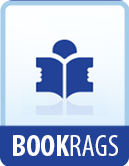* * *
Mr. Chairman, because of the complexity of this bill and the delicate balances which it creates among competing economic interests, the committee will resist extensive amendment of this bill. On behalf of the committee I would urge all of my colleagues to vote favorably on Sec. 22.
Mr. SKUBlTZ. Mr. Chairman, will the gentleman yield?
Mr. KASTENMEIER. I am happy to yield to my friend,
the gentleman from
Kansas.
Mr. SKUBITZ. Mr. Chairman, I thank my friend,
the gentleman from
Wisconsin, for yielding.
Mr. Chairman, I have received a great deal of mail from the schoolteachers in my district who are particularly concerned about section 107—fair use—the fair use of copyrighted material. Having been a former schoolteacher myself, I believe they make a good point and there is a sincere fear on their part that, because of the vagueness or ambiguity in the bill’s treatment of the doctrine of fair use, they may subject themselves to liability for an unintentional infringement of copyright when all they were trying to do was the job for which they were trained.
The vast majority of teachers in this country would not knowingly infringe upon a person’s copyright, but, as any teacher can appreciate, there are times when information is needed and is available, but it may be literally impossible to locate the right person to approve the use of that material and the purchase of such would not be feasible and, in the meantime, the teacher may have lost that “teachable moment.”
Did the subcommittee take these problems into consideration and did they do anything to try and help the teachers to better understand section 107?
Have the teachers been protected by this section 107?
Mr. KASTENMElER. Mr. Chairman, in response to the gentleman’s question and his observations preceding the question, I would say, indeed they have.
Over the years this has been one of the most difficult questions. It is a problem that I believe has been very successfully resolved.
Section 107 on “Fair Use” has, of course, restated four standards, and these standards are, namely: The purpose and character of the use of the material; the nature of the copyrighted work; the amount and substantiality of the portion used in relation to the copyrighted work as a whole; and the effect of the use upon the potential market for or value of the copyrighted work.




